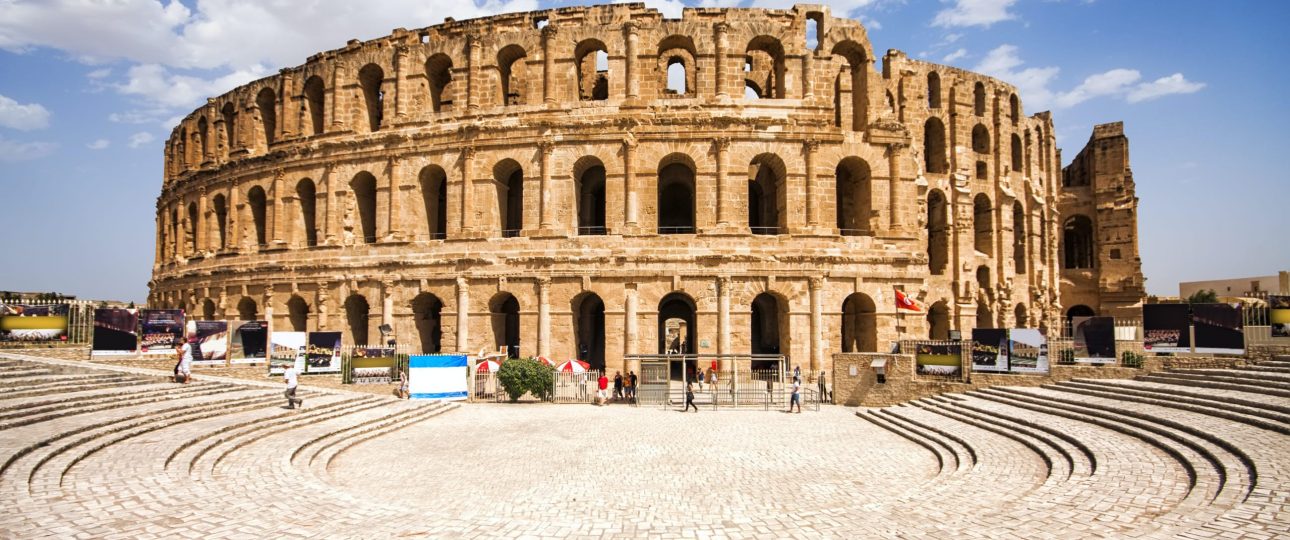Discovering El Djem Amphitheatre in Tunisia
The History of El Djem Amphitheatre
El Djem Amphitheatre, also known as Thysdrus Amphitheatre, is a remarkable UNESCO World Heritage Site located in El Djem, Tunisia. Constructed around 238 AD, this amphitheater stands as a testament to the architectural prowess of the Roman Empire. It is one of the best-preserved Roman stone ruins globally and is unique in Africa.
With an estimated seating capacity of 35,000, El Djem Amphitheatre ranks among the largest in the ancient world, comparable to the Colosseum in Rome. The structure measures 148 meters by 122 meters and was built using stone blocks on flat ground. Although it was never completed, it remains exceptionally well-conserved.
Historically, the amphitheater hosted gladiatorial contests and public spectacles. In the Middle Ages, it served as a fortress, providing refuge during invasions. Over time, it has been used for various purposes, including as a saltpeter factory and later for shops and grain storage.
Exploring the Amphitheatre
Upon entering El Djem Amphitheatre, the sheer scale of the structure is immediately apparent. The elliptical arena is encircled by towering walls that once echoed with the cheers of spectators. The amphitheater’s underground chambers and tunnels offer a fascinating glimpse into the logistics of ancient Roman spectacles.
Climbing to the top of the amphitheater rewards visitors with panoramic views of El Djem and the surrounding Tunisian landscape. This vantage point provides a unique perspective on both the historical and geographical context of the site.
Best Time to Visit
For a comfortable visit, aim for the spring or fall when the weather is mild. The summer heat in Tunisia can be intense, making exploration challenging. Plan accordingly to avoid the peak summer months.
Getting There
Travelers from Tunis can reach El Djem by car or train. The drive takes about two and a half hours, while the train journey is approximately three hours. For those traveling from other parts of Tunisia or neighboring countries, buses and taxis are viable options. Always check current schedules and routes to ensure a smooth trip.
Local Transportation
Once in El Djem, getting around is straightforward. Taxis and local buses are readily available and can take you to the amphitheater and other nearby attractions. The amphitheater is within walking distance from the town center, making it easily accessible on foot.
Summary of Facts
- El Djem Amphitheatre is a Roman amphitheater in El Djem, Tunisia, built around 238 AD.
- It has a seating capacity of approximately 35,000 and is a UNESCO World Heritage Site.
- The amphitheater was used for gladiatorial contests and public spectacles.
- It served as a fortress in the Middle Ages and has been used for various purposes over the centuries.
- The best time to visit is during spring and fall.
- Accessible from Tunis by car or train, with local transportation options available in El Djem.
El Djem Amphitheatre offers a unique opportunity to explore a piece of Roman history in Africa. Whether you’re a history enthusiast or a curious traveler, this site provides a captivating glimpse into the past. Plan your visit to experience the grandeur of this ancient landmark.




